
Tourism and the Southeast Asian crises of 1997 and 1998: A view from Singapore
- Geography, Planning, and Recreation
Research output : Contribution to journal › Article › peer-review
Singapore has historically stood out as an economic anomaly among countries in the developing world. Its per capita income was higher than most industrialised countries, its government was relatively uncorrupt, and despite the economic difficulties experienced throughout Asia starting in 1997, it was still rated as one of the safest places in the world for investments. Starting in 1997 and extending through 1998, Singapore was hit by three major crises: the currency turmoil affecting its neighbours (especially Thailand, Indonesia and Malaysia); the El Nino-driven forest fires on Borneo and Sumatra that filled Singapore's air with brown smoke; and the political and social crises in Malaysia and Indonesia. These three crises brought international, intra-regional and domestic tourism in Southeast Asia to a near standstill. Singapore received some benefits from these problems as currency from neighbouring countries flew into Singapore in search of a safe haven, thereby supporting the Singapore dollar, and ethnic Chinese and others flew to Singapore to escape both the choking smoke from forest fires and the political unrest in Indonesia, and filled Singapore's hotels. Singapore weathered these varied crises quite well, and ultimately Singapore may emerge in an even stronger position as the economic powerhouse of Southeast Asia.
ASJC Scopus subject areas
- Geography, Planning and Development
- Tourism, Leisure and Hospitality Management
Access to Document
- 10.1080/13683509908667858
Other files and links
- Link to publication in Scopus
Fingerprint
- Asian Crisis Business & Economics 100%
- Singapore Social Sciences 75%
- tourism Earth & Environmental Sciences 73%
- currency Earth & Environmental Sciences 71%
- Tourism Social Sciences 69%
- Southeast Asia Earth & Environmental Sciences 59%
- forest fire Earth & Environmental Sciences 57%
- smoke Earth & Environmental Sciences 54%
T1 - Tourism and the Southeast Asian crises of 1997 and 1998
T2 - A view from Singapore
AU - Lew, A. A.
N2 - Singapore has historically stood out as an economic anomaly among countries in the developing world. Its per capita income was higher than most industrialised countries, its government was relatively uncorrupt, and despite the economic difficulties experienced throughout Asia starting in 1997, it was still rated as one of the safest places in the world for investments. Starting in 1997 and extending through 1998, Singapore was hit by three major crises: the currency turmoil affecting its neighbours (especially Thailand, Indonesia and Malaysia); the El Nino-driven forest fires on Borneo and Sumatra that filled Singapore's air with brown smoke; and the political and social crises in Malaysia and Indonesia. These three crises brought international, intra-regional and domestic tourism in Southeast Asia to a near standstill. Singapore received some benefits from these problems as currency from neighbouring countries flew into Singapore in search of a safe haven, thereby supporting the Singapore dollar, and ethnic Chinese and others flew to Singapore to escape both the choking smoke from forest fires and the political unrest in Indonesia, and filled Singapore's hotels. Singapore weathered these varied crises quite well, and ultimately Singapore may emerge in an even stronger position as the economic powerhouse of Southeast Asia.
AB - Singapore has historically stood out as an economic anomaly among countries in the developing world. Its per capita income was higher than most industrialised countries, its government was relatively uncorrupt, and despite the economic difficulties experienced throughout Asia starting in 1997, it was still rated as one of the safest places in the world for investments. Starting in 1997 and extending through 1998, Singapore was hit by three major crises: the currency turmoil affecting its neighbours (especially Thailand, Indonesia and Malaysia); the El Nino-driven forest fires on Borneo and Sumatra that filled Singapore's air with brown smoke; and the political and social crises in Malaysia and Indonesia. These three crises brought international, intra-regional and domestic tourism in Southeast Asia to a near standstill. Singapore received some benefits from these problems as currency from neighbouring countries flew into Singapore in search of a safe haven, thereby supporting the Singapore dollar, and ethnic Chinese and others flew to Singapore to escape both the choking smoke from forest fires and the political unrest in Indonesia, and filled Singapore's hotels. Singapore weathered these varied crises quite well, and ultimately Singapore may emerge in an even stronger position as the economic powerhouse of Southeast Asia.
UR - http://www.scopus.com/inward/record.url?scp=0033919139&partnerID=8YFLogxK
UR - http://www.scopus.com/inward/citedby.url?scp=0033919139&partnerID=8YFLogxK
U2 - 10.1080/13683509908667858
DO - 10.1080/13683509908667858
M3 - Article
AN - SCOPUS:0033919139
SN - 1368-3500
JO - Current Issues in Tourism
JF - Current Issues in Tourism
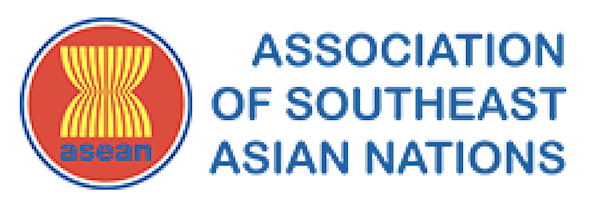
Tourism and the Southeast Asian crises of 1997 and 1998: A view from Singapore

Secondary Title
Current Issues in Tourism
financial crisis, tourism market, tourist destination, Singapore
Classification
Other publications.
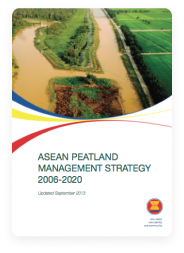
ASEAN Programme on Sustainable Management of Peatland Ecosystem
Author: Environment Division
09 January 2016
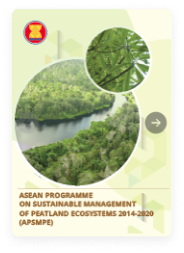
Supporter & Funder

This website stores cookies on your computer. These cookies are used to collect information about how you interact with our website and allow us to remember you. We use this information in order to improve and customize your browsing experience and for analytics and metrics about our visitors both on this website and other media. To find out more about the cookies we use, see our Cookies Policy .
If you decline, your information won’t be tracked when you visit this website. A single cookie will be used in your browser to remember your preference not to be tracked.
Singapore Tourism Statistics
Singapore sg: international tourism: expenditures, view singapore's singapore sg: international tourism: expenditures from 1995 to 2016 in the chart:.
Singapore SG: International Tourism: Expenditures: % of Total Imports
View singapore's singapore sg: international tourism: expenditures: % of total imports from 1995 to 2016 in the chart:.
Singapore SG: International Tourism: Expenditures: for Travel Items
View singapore's singapore sg: international tourism: expenditures: for travel items from 1995 to 2016 in the chart:.
Singapore SG: International Tourism: Number of Arrivals
View singapore's singapore sg: international tourism: number of arrivals from 1995 to 2016 in the chart:.
Singapore SG: International Tourism: Number of Departures
View singapore's singapore sg: international tourism: number of departures from 1995 to 2016 in the chart:.
Singapore SG: International Tourism: Receipts
View singapore's singapore sg: international tourism: receipts from 1995 to 2016 in the chart:.
Singapore SG: International Tourism: Receipts: % of Total Exports
View singapore's singapore sg: international tourism: receipts: % of total exports from 1995 to 2016 in the chart:.
Singapore SG: International Tourism: Receipts: for Travel Items
View singapore's singapore sg: international tourism: receipts: for travel items from 1995 to 2016 in the chart:.
Explore our Data
To read this content please select one of the options below:
Please note you do not have access to teaching notes, the impact of the asian economic crisis on tourism in singapore.
The Tourist Review
ISSN : 0251-3102
Article publication date: 1 March 1999
In the mid 1990's the East Asia/ Pacific region was looking forward to an unprecedented period of tourism growth. Tourism is subject like any other industry to external economic forces and the successful implementation of tourism strategy is dependent on a continuing favourable economic climate. Signs of the economic timebomb in the Asia Pacific region had been evident, but largely ignored. The impact of the economic crisis has meant that at least in the short to medium term optimistic tourism projections have been put on hold. This paper looks at the background to the Asian financial crisis and the impact that it has had on tourism strategy in Singapore. It highlights both the problems and opportunities which have arisen as a result.
Cave, P. (1999), "The impact of the Asian economic crisis on tourism in Singapore", The Tourist Review , Vol. 54 No. 3, pp. 50-54. https://doi.org/10.1108/eb058315
Copyright © 1999, MCB UP Limited
Related articles
We’re listening — tell us what you think, something didn’t work….
Report bugs here
All feedback is valuable
Please share your general feedback
Join us on our journey
Platform update page.
Visit emeraldpublishing.com/platformupdate to discover the latest news and updates
Questions & More Information
Answers to the most commonly asked questions here
Asian financial crisis (1997–1998)
Singapore infopedia.
The Asian financial crisis started in Thailand with the collapse of the Thai baht in July 1997. What began as a currency crisis soon affected the wider economy and spread quickly to the rest of the region, leading to economic downturns in several countries. Singapore was not directly hit but suffered the spill-over effects of the economic slowdown, 1 and fell into recession in the second half of 1998. Realising that stimulating domestic demand was not a viable option in a downturn caused by external circumstances, the Singapore government implemented various measures to help ease the cost burden on businesses and individuals. 2 Background The Thai baht was the target of intense speculative attacks just before it collapsed in July 1997. 3 For a while, the Thai government managed to defend the currency, which had been pegged to the United States (US) dollar. However on 2 July 1997, it announced that it would no longer intervene and would allow the baht to float. The sharp depreciation of the baht against the US dollar began that same day. 4 This immediately triggered panic among investors, and other regional currencies such as the Philippine peso, Indonesian rupiah and Malaysian ringgit also began to experience selling pressure. Soon, foreign investors lost confidence in not only the currencies but also in those economies that had, what they saw, weak fundamentals. 5 In countries most affected by the crisis, banks and other companies collapsed or had to be rescued, and many others were forced to downsize, resulting in massive unemployment. In Indonesia, the crisis even led to the resignation of then president Suharto. 6 Impact on Singapore’s economy Given its close economic links with other Asian countries, Singapore could not escape the effects of the financial crisis facing its regional neighbours despite strong economic fundamentals. 7 From a healthy eight percent growth rate registered in 1997, Singapore’s growth fell to a dismal 1.5 percent in 1998. 8 The impact on Singapore was indirect but wide-ranging. 9 Growth also slowed across many industries between 1997 and 1998. The manufacturing sector contracted by 0.5 percent in 1998, down from a 4.5-percent growth recorded a year earlier. The growth of the construction industry fell to 3.9 percent from 1997’s 15 percent. The commerce sector also shrank by four percent in 1998, a drop from the 5.7 percent growth in 1997. In 1998, the financial and business sector experienced a moderate growth of 3.1 percent, down from 11.3 percent reached in 1997, while the transport and communications sector grew by 5.5 percent, a substantial drop from the 9.2 percent achieved in 1997. 10 Singapore’s labour market also took a hit with unemployment rate rising to 3.2 percent in 1998. On average, 62,800 people were unemployed in 1998, compared with 34,800 in 1997. Poor performance across various industry sectors, namely manufacturing, commerce, construction, and transport and communications, led to the retrenchment of 28,300 workers in 1998, the highest ever recorded since the last economic recession in 1985, which saw 19,529 workers laid off. 11 Company closures and downsizing also led to lower demand for commercial, industrial and residential properties, which put downward pressure on property prices and rentals. 12 Stock prices fell and this had a negative wealth effect which further weakened consumer sentiment. 13 Because Singapore’s petrochemical industry catered mainly to Asia, the regional economic slowdown meant lower demand for Singapore’s oil domestic exports, which fell sharply by 15.3 percent in 1998. Non-oil domestic exports still grew, but at a slower rate of 0.9 percent. As manufacturers contended with weaker demand in both regional and local markets, the manufacturing sector contracted slightly by 0.6 percent in 1998. 14 The financial services sector, on the other hand, was one of the worst hit industries and registered a sharp contraction of 7.4 percent in 1998. 15 Reflecting the poor economic outlook for Singapore and the erosion of confidence in the regional economies, banks curbed their local and offshore lending activities and generally lent less to both companies and individuals. 16 Also badly affected were the wholesale and retail trade sector, and the hotel and restaurant sector, which contracted by 4.1 percent and 7.5 percent respectively in 1998. 17 In addition, visitor arrivals fell sharply due to the economic slowdown in the regional markets, where most of Singapore’s visitors were from, 18 and the strengthening of the Singapore dollar against various regional currencies. 19 With weaker domestic spending and fewer foreign visitors, retail sales (excluding motor vehicle sales) fell 8.6 percent in volume and 9.2 percent in value in 1998. 20 Food and beverage outlets, likewise, reported a drop in business. 21 Hotels saw a significant decline in their average occupancy rates 22 and resorted to lowering room rates to boost occupancies, leading to a 19.4 percent drop in room revenue in 1998. 23 The government’s response The Singapore government implemented a host of measures in 1998 with two key objectives: lower business costs and provide relief to individuals and households. Some of these were in place until 1999 and others until 2000. 24 The 1998 budget did not include strong measures to counter the effects of the regional financial crisis as the economy was still doing well when it was announced in February 1998. 25 It did, however, include measures to help lower business costs, such as a 15-percent property tax rebate for commercial and industrial properties, property tax exemption of up to five years for land under development, and the removal of stamp duty on all instruments except those related to stock and shares, and immovable properties. Individuals and households also received help, such as a five-percent personal income tax rebate, and rebates on service and conservancy charges and rentals on Housing and Development Board flats. 26 Subsequently, regional economic conditions deteriorated and the outlook for Singapore worsened. In response, the government announced a package of off-budget measures in June 1998 worth S$2 billion. 27 To reduce business costs, the package included an additional 40-percent property tax rebate for commercial and industrial properties, reduced rents, rental rebates on various government properties, as well as lower telecommunications tariffs. 28 It also provided specific measures to mitigate the effects of the economic slowdown on the property market. 29 For example, government land sales were suspended and successful tenderers were allowed to re-assign government land sale parcels if they were unable financially to complete their development. 30 As Singapore slipped into recession in the second half of 1998, the government announced another package worth S$10.5 billion in November, aimed at further reducing costs for businesses by 15 percent. 31 A major component was a 10-percent cut in employers’ Central Provident Fund contribution rate. Other key measures included a 10-percent corporate tax rebate, wage reduction of five to eight percent, and cuts in a wide range of government rentals, rates and fees. 32 Recovery By early 1999, the Singapore economy had begun to show signs of recovery. 33 In the first quarter of that year, the economy returned to positive growth, powered by a strong rebound in the manufacturing sector. Retrenchments during the quarter also declined. The recovery was sustained through the year and overall gross domestic product for 1999 grew by 7.2 percent, much higher than the government’s initial forecast of between -1 percent and +1 percent. 34 Author Valerie Chew References 1. “FY1998: Budget,” Ministry of Finance, 13 May 2008 (From NLB’s Web Archive Singapore ); Singapore. Ministry of Finance, Economic Survey of Singapore, 1997 (Singapore: Ministry of Finance, 1998), 2, 11–12, 22, 100–03. (Call no. RSING 330.95957 ESS); Gerald Tan, The Asian Currency Crisis (Singapore: Times Academic Press, 2000), 1, 51–52, 4–86. (Call no. RSING 332.095 TAN) 2. Singapore. Ministry of Finance, Economic Survey of Singapore, 1997 , 14, 49–60. 3. Ministry of Finance, “FY1998: Budget”; Singapore. Ministry of Finance, Economic Survey of Singapore, 1997 , 22. 4. Ministry of Finance, “FY1998: Budget”; Singapore. Ministry of Finance, Economic Survey of Singapore, 1997 , 11–12, 22; Tan, Asian Currency Crisis , 51, 66. 5. Ministry of Finance, “FY1998: Budget”; Singapore. Ministry of Finance, Economic Survey of Singapore, 1997 , 2, 22. 6. Tan, Asian Currency Crisis , 1–2, 99, 120–22. 7. Ministry of Finance, “FY1998: Budget”; Singapore. Ministry of Finance, Economic Survey of Singapore, 1997 , 100–03. 8. Ministry of Finance, Economic Survey of Singapore, 1997 , 14, 16; Tan, Asian Currency Crisis , 106, 137. 9. Singapore. Ministry of Finance, Economic Survey of Singapore, 1997 , 100–03. 10. Singapore. Ministry of Finance, Economic Survey of Singapore, 1997 , 14–17. 11. Singapore. Ministry of Finance, Economic Survey of Singapore, 1997 , 21, 24. 12. Tan, Asian Currency Crisis , 136. 13. Singapore. Ministry of Finance, Economic Survey of Singapore, 1997 , 100; Tan, Asian Currency Crisis , 136. 14. Singapore. Ministry of Finance, Economic Survey of Singapore, 1997 , 90, 103. 15. Singapore. Ministry of Finance, Economic Survey of Singapore, 2002 (Singapore: Ministry of Finance, 2002), 90. (Call no. RSING 330.95957 ESS) 16. Singapore. Ministry of Finance, Economic Survey of Singapore, 1998 (Singapore: Ministry of Finance, 1999), 16. (Call no. RSING 330.95957 ESS) 17. Singapore. Ministry of Finance, Economic Survey of Singapore, 2002 , 90. 18. Singapore Tourist Promotion Board, Singapore Annual Report on Tourism Statistics 2000 (Singapore: Singapore Tourism Board, 2001), 10. (Call no. RSING 338.47915957 SARTS-[AR]); Singapore. Ministry of Finance, Economic Survey of Singapore, 1998 , 158. 19. Singapore. Ministry of Finance, Economic Survey of Singapore, 1998 , 14; Tan, Asian Currency Crisis , 85. 20. Singapore. Ministry of Finance, Economic Survey of Singapore, 2002 , 116, 117. 21. Singapore Tourist Promotion Board, Singapore Annual Report on Tourism Statistics 2000 , 19 ; Singapore. Ministry of Finance, Economic Survey of Singapore, 1998 , 159. 22. Singapore Tourist Promotion Board, Singapore Annual Report on Tourism Statistics 2000 , 16–17, 54; Singapore. Ministry of Finance, Economic Survey of Singapore, 1998 , 159. 23. Singapore Tourist Promotion Board, Singapore Annual Report on Tourism Statistics 2000 , 58 . 24. Singapore. Ministry of Finance, Economic Survey of Singapore, 1998 , 49–60. 25. Narendra Aggarwal, (1998, March 5). “ Absence of Tax Cuts Disappoints Business Sector ,” Straits Times, 5 March 1998 , 45. (From NewspaperSG); Ministry of Finance, “FY1998: Budget”; Ngiam Kee Jim, Coping with the Asian Financial Crisis: The Singapore Experience (Singapore: Institute of Southeast Asian Studies, 2000), 16. (Call no. RSING 332.4095957 NGI) 26. Aggarwal, Absence of Tax Cuts Disappoints Business Sector ”; Ministry of Finance, “FY1998: Budget”; Singapore. Ministry of Finance, Economic Survey of Singapore, 1998 , 52–53. 27. Singapore. Ministry of Finance, Economic Survey of Singapore, 1998 , 54; Ngiam, Coping with the Asian Financial Crisis , 16. 28. Singapore. Ministry of Finance, Economic Survey of Singapore, 1998 , 54; Tan, Asian Currency Crisis , 202. 29. Singapore. Ministry of Finance, Economic Survey of Singapore, 1998 , 55–56. 30. Tan, Asian Currency Crisis , 202; Singapore. Ministry of Finance, Economic Survey of Singapore, 1998 , 56. 31. Singapore. Ministry of Finance, Economic Survey of Singapore, 1998 , 57–70; Ngiam, Coping with the Asian Financial Crisis , 17. 32. Singapore. Ministry of Finance, Economic Survey of Singapore, 1998 , 57–60; Tan, Asian Currency Crisis , 202; Ngiam, Coping with the Asian Financial Crisis , 17. 33. Walter Fernandez, “ Recession Over but It’s Not Time to Rejoice ,” Straits Times, 20 May 1999, 1. (From NewspaperSG); Singapore. Ministry of Finance, Economic Survey of Singapore, 1998 , 57–60; Tan, Asian Currency Crisis , 202. 34. Walter, “ Recession Over but It’s Not Time to Rejoice .” Further resources Andrew Berg, “ The Asia Crisis: Causes, Policy Responses, and Outcomes ” (International Monetary Fund Working Paper no. 99/138, International Monetary Fund, October 1999)
Callum Henderson, Asia Falling?: Making Sense of the Asian Currency Crisis and Its Aftermath (Singapore: McGraw-Hill, 1998). (Call no.: RSING 332.456095 HEN) The information in this article is valid as at 30 July 2016 and correct as far as we are able to ascertain from our sources. It is not intended to be an exhaustive or complete history of the subject.
Rights Statement
The information on this page and any images that appear here may be used for private research and study purposes only. They may not be copied, altered or amended in any way without first gaining the permission of the copyright holder.
More to Explore
Singapore glass factory strike.
The Singapore Glass Manufacturers Co Ltd was a leading manufacturer of glassware, plastics and cardboard in Singapore. Its factory, popularly known as the Singapore Glass Factory, stood on Henderson Road, and was a famous landmark in Bukit Merah for many years. Established in 1948 shortly after World War II, the...
Sat Pal Khattar
Sat Pal Khattar (b. 22 November 1942, Bhera, India–) is a prominent lawyer, businessman and Indian community leader. He founded Khattar Wong & Partners, one of the largest law firms in Singapore, and is the chairman of Khattar Holdings, a private investment firm. Among the many portfolios that he holds,...
Richard Hu Tse Tau
Richard Hu Tsu Tau (Dr) (b. 30 October 1926–) is a former politician who held several key ministerial positions, most notably as the minister for finance. Hu presented 16 budgets to Parliament during his term as finance minister. After retiring from politics in 2001, he has taken up key corporate...
Lim Kim San
Lim Kim San (b. 30 November 1916, Singapore–d. 20 July 2006, Singapore) was a former politician best known for his contributions to public housing in the 1960s during his term as chairman of the Housing and Development Board (HDB). Throughout his political career, Lim held various ministerial portfolios including finance,...
Chengara Veetil Devan Nair (b. 5 August 1923, Jasin, near Malacca, Malaysia –d. 7 December 2005, Canada ), better known as just Devan Nair, was Singapore’s third president and first Indian president. ...

James Joseph Puthucheary
James Joseph Puthucheary (b. circa 1922, Kerala, India–d. 3 April 2000, Petaling Jaya, Malaysia) was an economist, trade unionist and lawyer. He supported the People’s Action Party (PAP) in the 1955 Legislative Assembly general election but later broke away from them to join the Barisan Sosialis in 1961. He was...
State Development Plan, 1961–1964
The State Development Plan, also referred to as the First Development Plan, was the first official blueprint for the economic development of Singapore after it attained self-government in 1959. Produced by the Ministry of Finance, the plan aimed to solve the pressing issues of economic stagnation and high unemployment rate...
Factories Ordinance, 1958
The Factories Ordinance, 1958 (Ord. 41 of 1958), was a piece of legislation that sought to set minimum standards for the health, safety and welfare of workers in factories. In 1960, factory workers numbered about 120,000 and made up one-quarter of Singapore’s total labour force. This ordinance was introduced when...
George Lien Ying Chow
George Lien Ying Chow (b. 2 August 1906, Guangdong, China–d. 6 August 2004, Singapore) was an entrepreneur, banker and philanthropist. He is best known as the founder of Overseas Union Bank (OUB), one of Southeast Asia’s largest banks before it was acquired by United Overseas Bank (UOB) in 2001. Lien’s...
Public Service Commission
The Public Service Commission (PSC) is the government agency responsible for the appointment, promotion, transfer, dismissal and exercise of disciplinary control over public officers in Singapore. It has another role as the administrator of government-funded scholarships aimed at attracting and grooming talent for public service. Since its establishment on 1...
Construct Countries
Singapore 1998.

In 1998, the Republic of Singapore was a small island city-state located in Southeast Asia with a population of approximately 3.6 million people. The official language was English and the currency was the Singapore Dollar. The government was a parliamentary republic headed by Prime Minister Goh Chok Tong, who had been in office since 1990. Singapore’s economy in 1998 relied heavily on manufacturing and services, making it one of the most prosperous countries in Asia. Banking and finance also played an important role; Singapore was home to many regional headquarters for major international banks. Education was highly valued in Singapore; literacy rates were higher than average for East Asian countries at around 95%. Overall, although Singapore faced economic challenges due to its small size and geographic isolation, its strong economy and strategic location provided hope for a bright future. See dentistrymyth for Singapore in the year of 2015.
Yearbook 1998
Singapore. Although Singapore was less affected by the Asian crisis than many other countries, the region’s stagnation caused business losses and shrinking tourism. The number of tourists was estimated at 6 million against 7.1 million in 1997. According to Countryaah , the capital of Singapore is Singapore. Prime Minister Goh Chok Tong predicted weak or no economic growth at all over the next few years compared to almost 8% in 1997. He described the country’s trials as the worst since independence in 1965.
The Small Workers ‘Party Workers’ Party (WP) leader JB Jeyaretnam, one of Parliament’s only three opposition members, was ordered by the court in July to pay the equivalent of SEK 470,000. in damages to Prime Minister Goh for an opinion ahead of the 1997 election which he found to be derogatory. The politics of Singapore are completely dominated by Goh’s PAP (People’s Action Party) and sentiments against opponents are common.
- Abbreviationfinder : What does SGP stand for in geography? Here, this 3 letter acronym refers to the country of Singapore.
During the summer, a battle flared up with Malaysia over the placement of passport control at the border. In addition, the two countries disputed whether rights to water, ports and airspace.
President SR Nathan was re-elected in August 2005 for a new six-year term. He had ended up being the only candidate for office when the Election Commission gave him the right – as the only one – to stand. The other three candidates had been rejected by the Commission on the grounds that they had “no experience and ability to manage financial affairs and could not fulfill the obligations of a president”. This was the third “presidential election” in Singapore following the amendment of the Constitution in 1992, which states that the president must be “elected by the people”.
The leader of Jamaah Islamiah in Singapore, Mas Selamat Kastari, arrived in the country in February 2006 after being arrested in Indonesia. The movement is fighting for the introduction of Islamic principles in Southeast Asia – especially in Singapore, Indonesia, Brunei, Malyasia, Thailand and the Philippines.
The government announced in February 2006 that it would share $ 2.6 billion out to the country’s inhabitants who were accumulated government surpluses from previous years. The opposition condemned the move as an open attempt to buy votes in the May elections.
Lee Hsien’s ruling Popular Action Party won the first “real” parliamentary elections in May. Ie elections in which more than one candidate was elected in each district. The election confirmed the prime minister’s popularity and his party got 82 of the parliament’s 84 seats.
In September 2008, the Supreme Court of Singapore sentenced Far Eastern Economic Review to pay compensation to Prime Minister Lee Hsien and his father Lee Kuan Yew for a 2006 article. methods of governing the country and holding down the opposition. In 2010, Lee Hsien and his father Lee Kuan Yew threatened the New York Times with legal action following an article in the International Herald Tribune . The article suggested that the title of Prime Minister had been inherited from father to son, and not because of Lee Hsien’s political merits. The New York Times ended up paying US $ 114,000 to the two prime ministers. Singapore has a close relationship with the US, participates in the US ‘war on terror’, and has participated with soldiers in the US occupation of Iraq. In its World Report 2010, Human Rights Watch named Singapore as the school example of a repressive state. The human rights organization referred to the country’s violent repression of the opposition and draconian national security laws.
Singapore was hit by the global economic crisis in 2008 and in 2009 growth was negative by 0.9%. But in 2010, growth rose to 14.5%.
To reduce pollution in the city, there are very high registration and customs fees that make the use of cars many times more expensive than in neighboring countries and in the West. Only 1 in 10 people has a car. The inhabitants instead use the extremely well-functioning public transport system.
The May 2011 parliamentary elections saw a decline for the ruling PAP, falling 6.5% to 60%. Due. however, the electoral system secured 82 out of the 87 seats in parliament. At the same time, it gave Prime Minister Lee the opportunity to continue on the post. In the period 2008-12, his annual salary as Prime Minister was US $ 2,856,930. This triggered considerable criticism and in January 2012 he therefore granted a 28% pay cut to DKK 1.7 million. US $. However, he remains the world’s highest-paid prime minister.
- Deutschland
You have exceeded the number of Favourites. Please remove some of them to add more.
Create your own Singapore guide with up to 12 of your Favourites.
As you browse through our site, add pages to your Favourites by clicking on the star button within every article.
To access and edit all your Favourites, click on the star button at the top right corner of every page throughout our site.
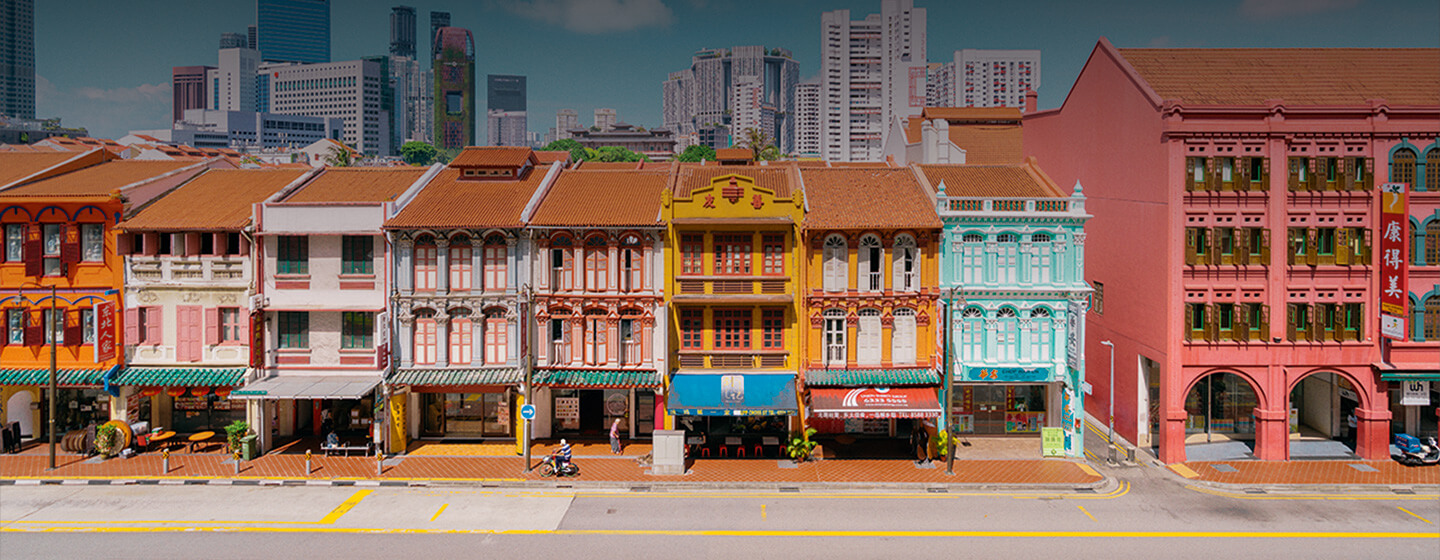
Where the ordinary is made extraordinary.

MADE IN SINGAPORE
Festival & Events
Visit Singapore

Holidays. Made in Singapore.
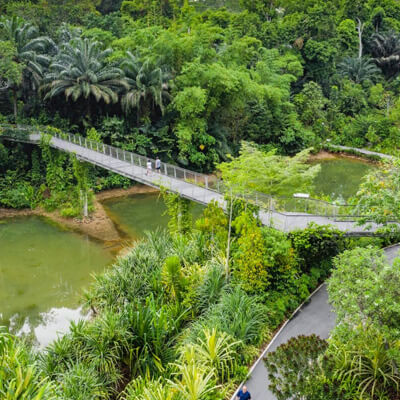
Discover the city’s natural beauty

Experience the richness of our culture and heritage
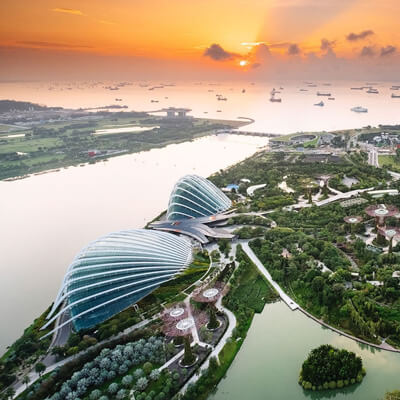
Explore Singapore’s unexpected charms
Vibrant neighbourhoods.
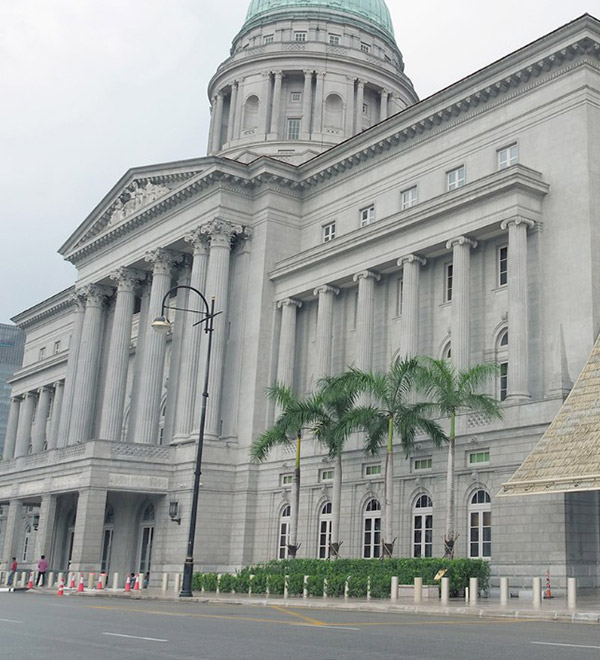
Civic District
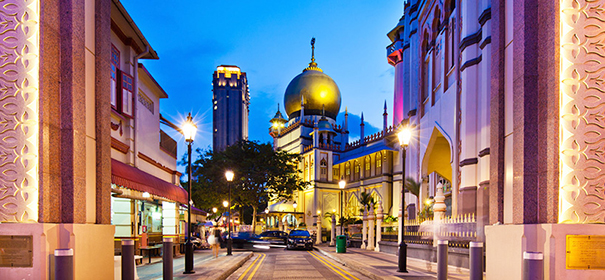
Kampong Gelam
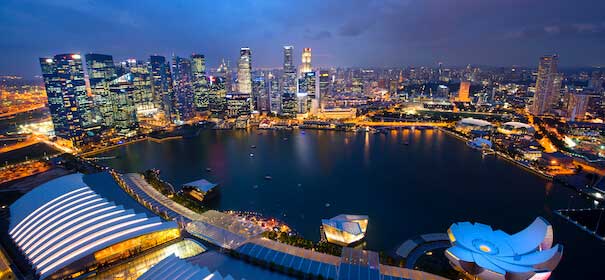
Popular Places
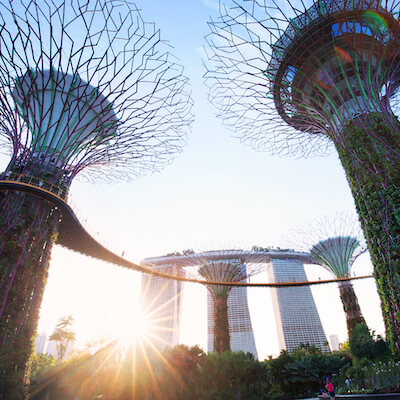
Gardens by the Bay
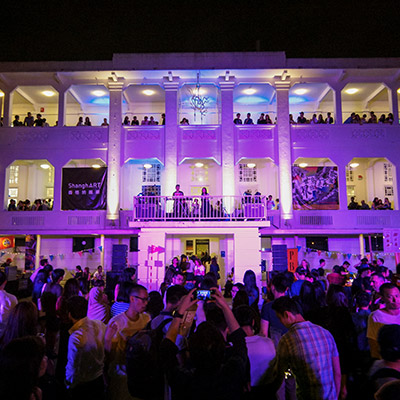
Gillman Barracks
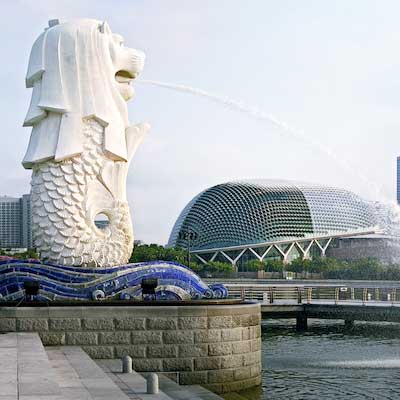
Merlion Park
Food highlights.

How to feed your food obsession
things to do and see
Chinese cuisines in Singapore
Singapore is steeped in culinary heritage, brought to our island from all around the world, including various regions of China.
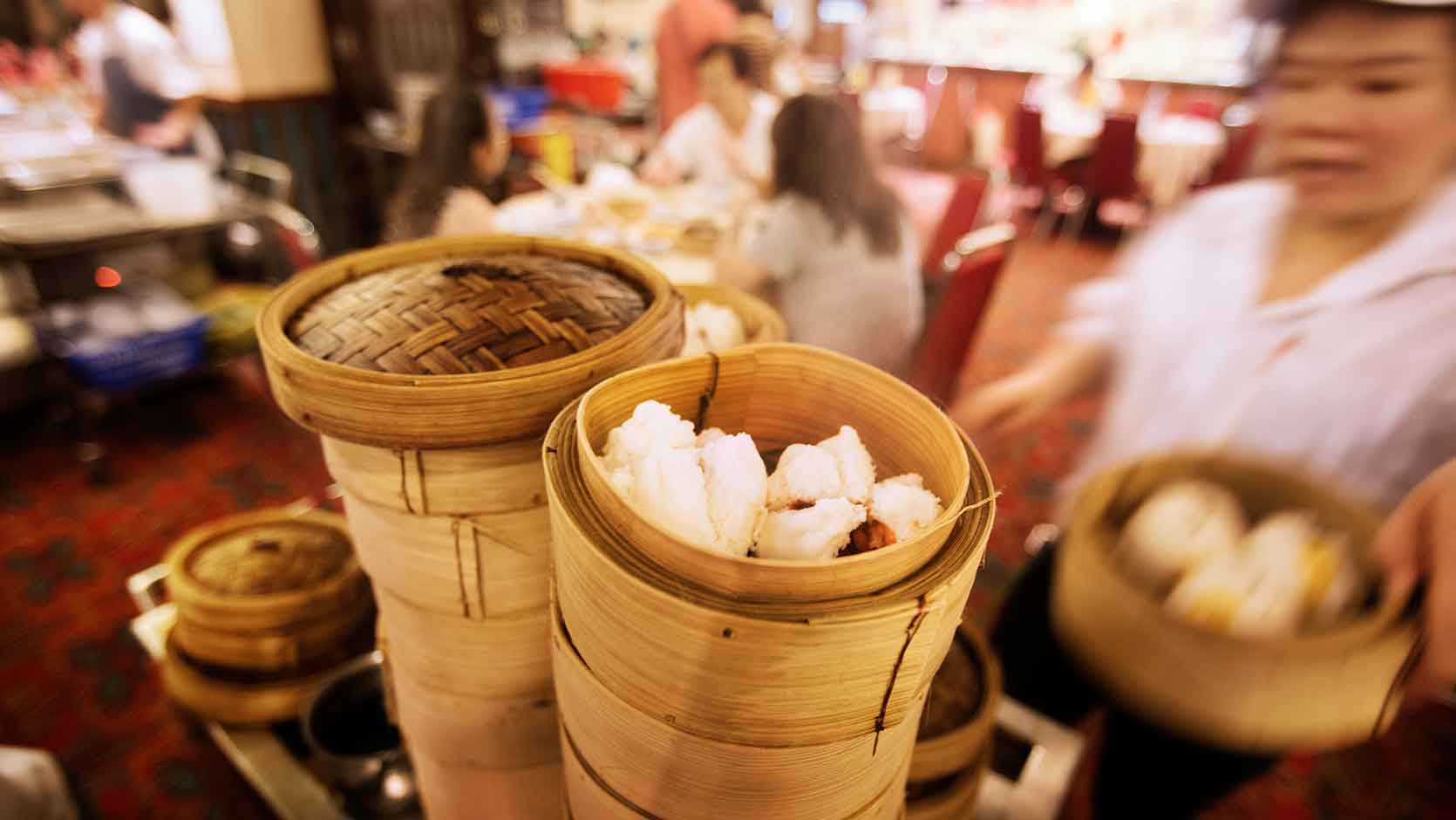
Best Chinatown restaurants in Singapore
New flavours and exciting culinary experiences are waiting to be uncovered in the cultural district of Chinatown.
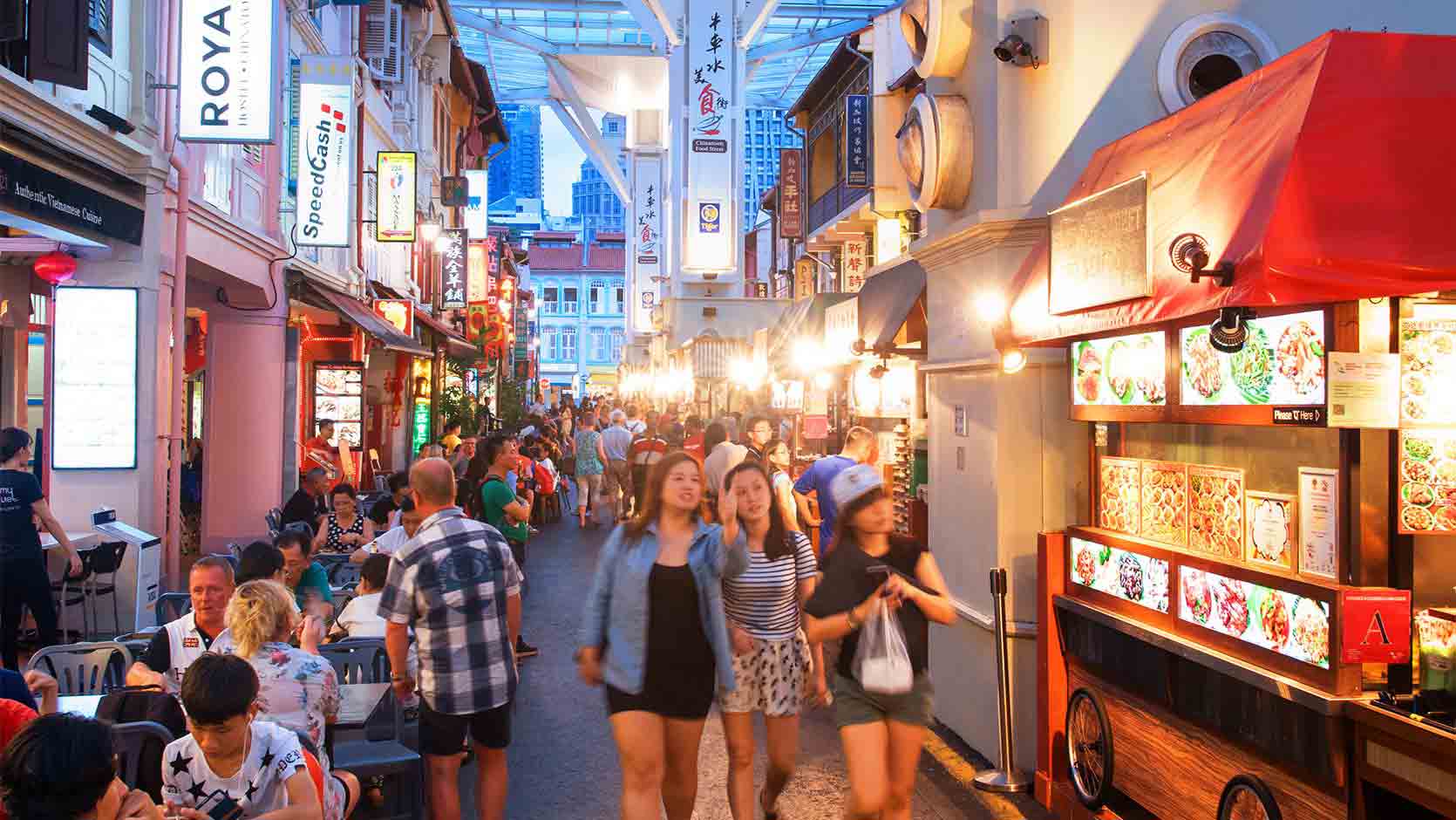
Ultimate Cooking Class for Foodies
Turn up the heat and unleash your inner chef with these in-depth cooking classes in Singapore.

Go Shopping

Discover Singaporean Brands. Made With Passion
Shopping on a budget in singapore.
Love shopping but don’t want to splurge unnecessarily? Budget-friendly shopping in Singapore is possible—just check out these places.

Retail therapy at Changi Airport
Spoil yourself with the abundance of shopping options available at Changi Airport.

Singapore with Retail Therapy: Orchard Road
From bespoke high-street to bargain buys, Orchard Road has something for everyone. Discover a shopping experience that matches every taste.
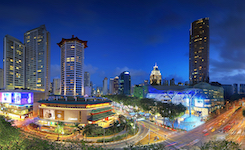
Traveller Essentials
Travel Requirements for Tourists to Singapore
Getting to Singapore
Getting Around Singapore
About Singapore
Featured Itineraries
- Enjoy Singapore in 7 days
- A 2-day guide for esports enthusiasts
- Decades in a day—a guide to SG
Walking Trails
- Hunting for inspiration at Tiong Bahru
- Discover the charms of Little India
- In The Neighbourhood: Chinatown
Passion Made Possible
Singapore is more than its tourist attractions. It’s constantly evolving, reinventing, and reimagining itself, with people who are passionate about creating new possibilities. It’s not just about what you can do here, it’s about what you can be.

IMAGES
VIDEO
COMMENTS
Starting in 1997 and extending through 1998, Singapore was hit by three major crises: the currency turmoil affecting its neighbours (especially Thailand, Indonesia and Malaysia); the El Nino-driven forest fires on Borneo and Sumatra that filled Singapore's air with brown smoke; and the political and social crises in Malaysia and Indonesia.
5 September - The Singapore national football team wins the 1998 Tiger Cup, winning Vietnam with a 1-0. 15 September - During TechVenture 98, it is announced that a Science Hub will be built in Buona Vista (now known as one-north ), costing about S$5b with a completion time of 15 years. [34] [35] [36]
Starting in 1997 and extending through 1998, Singapore was hit by three major crises: the currency turmoil affecting its neighbours (especially Thailand, Indonesia and Malaysia); the El Nino-driven forest fires on Borneo and Sumatra that filled Singapore's air with brown smoke; and the political and social crises in Malaysia and Indonesia.
The data reached an all-time high of 24.506 USD bn in 2013 and a record low of 3.222 USD bn in 1998. SG: International Tourism: Expenditures: for Travel Items data remains active status in CEIC and is reported by World Bank. The data is categorized under Global Database's Singapore - Table SG.World Bank.WDI: Tourism Statistics.
Singapore's Tourism IndustT0y How Its Strengths Offset Economic, Social, and Environmental Challenges by Rex S. Toh, Habibullah Khan, and Karen Lim Despite its popularity as a tourist destination, Singapore exhibits a combination of characteristics that, so far, have kept it from succumbing to the negative effects of mass tourism. ourism worldwide has expert- ' enced phenomenal growth.
Singapore faced its first drop in visitor arrivals in 14 years - 17.6% drop in October 1997. Asian Crisis and haze problem are the root cause of this drop. A brief explanation of the nature of the Asian crisis and its impact on tourism in Singapore is explained in chapter three. This chapter also explains haze problem and its impact on ...
This paper addresses the implications of the Asian economic crisis for tourism. The nature of the crisis is discussed briefly and its occurrence at a time of previously rapid regional growth in tourism is pointed out. It is argued that effective demand diminished at a time when supply was increasing.
The impact of the economic crisis has meant that at least in the short to medium term optimistic tourism projections have been put on hold. This paper looks at the background to the Asian financial crisis and the impact that it has had on tourism strategy in Singapore. It highlights both the problems and opportunities which have arisen as a result.
Title: Regionalism and tourism: Exploring integral links in Singapore: Authors: Chang, T.C. Keywords: Regionalism Singapore Tourism: Issue Date: 1998
Geography, Business. 1998. Traditionally, tourism development in Singapore involves creating and promoting tourist attractions to lure inbound visitors. Today in the 1990s the focus is on regional tourism, and Singapore is….
Traditionally, tourism development in Singapore involves creating and promoting tourist attractions to lure inbound visitors. Today in the 1990s the focus is on regional tourism, and Singapore is ...
Starting in 1997 and extending through 1998, Singapore was hit by three major crises: the currency turmoil affecting its neighbours (especially Thailand, Indonesia and Malaysia); the El Niño-driven forest fires on Borneo and Sumatra that filled Singapore's air with brown smoke; and the political and social crises in Malaysia and Indonesia.
This paper explores the concept of sustainable tourism and how it applies to urban destinations such as Singapore. As tourism is an important industry in Singapore, in terms of employment, business activity and an income generator, the Singapore Tourism Board is continuously looking at potential avenues to make Singapore a competitive destination.
The extraordinary performance of the Singapore tourism industry is attributed, among other factors, to the active tourism policies of the Singapore government, but the effectiveness of Singapore tourism policies has never been quantified. ... STB developed in 1998 the Tourism Development Assistance Scheme (TDAS). The TDAS comprises four ...
The Asian financial crisis started in Thailand with the collapse of the Thai baht in July 1997. What began as a currency crisis soon affected the wider economy and spread quickly to the rest of the region, leading to economic downturns in several countries. Singapore was not directly hit but suffered the spill-over effects of the economic ...
A sample of 424 tourists departing from Singapore Changi International Airport was surveyed with a structured questionnaire. A series of analyses were performed on the segmented groups—Europe, Asia, Oceania and North America. ... Liljander & Strandvik, 1995; Anderson 1998), which in the tourism context would mean tourists' intention to ...
of employment, business activity and an income generator, the Singapore Tourism Board is continuously looking at potential avenues to make Singapore a competitive destination. ... (1998, 27). While sustainable tourism may be defined as the 'management of all resources in such a way that we can fulfil economic, social and aesthetic needs while ...
Traditionally, tourism development in Singapore involves creating and promoting tourist attractions to lure inbound visitors. Today in the 1990s the focus is on regional tourism, and Singapore is being developed as a 'tourism capital' and a hubbing centre for visitors travelling to and within Asia. ... April 1998. Pages 73-94. Related ...
The development of tourism in Manggarai, the largest regency on Flores, has stimulated a number of villagers to rebuild traditional style houses as an attempt to attract foreign visitors. A few of these cases are examined here to show how the status of these houses is negotiated and contested within the context of a number of different ideas ...
Yearbook 1998. Singapore. Although Singapore was less affected by the Asian crisis than many other countries, the region's stagnation caused business losses and shrinking tourism. The number of tourists was estimated at 6 million against 7.1 million in 1997. According to Countryaah, the capital of Singapore is Singapore. Prime Minister Goh ...
In January 1998, the ASEAN Tourism Ministers signed a Ministerial Understanding on ASEAN Cooperation in Tourism, during their Meeting in Cebu City, Philippines. The document provides among others the development and promotion of ASEAN as a single tourism destination with world-class standards, facilities and attractions.
Tourism Information and Services Hub; Need quick answers? Get them via our chatbot on Facebook. Tourist Hotline. Toll-free in Singapore 1800 736 2000* From Overseas +65 6736 2000 *Kindly note that airtime charges apply for mobile calls to 1800 service lines and calls are free of charge only if made from regular land lines. Connect with us
The impact of tourism is viewed within the "new security" framework which involves broadening the notion of security beyond its traditional focus on military issues and inter-state relations into such realms as economic, environmental and societal security with a strong emphasis on sub-national situations.